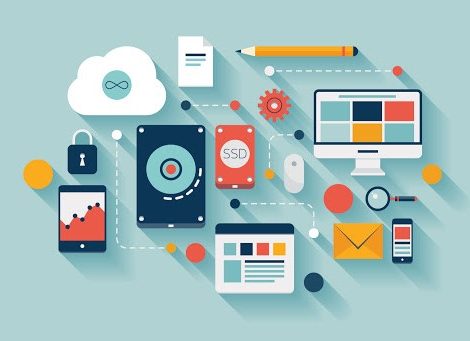Top 5 Digital Transformation Trends In 2021
2020 has been an impactful year. Businesses and workers have had to adapt, both socially and professionally, to modern realities. Digital transition has changed from just being a work-in-progress to a swift road. Working remotely has gone from a once-in-a-while occurrence to a routine for most individuals. In the new normal, the process of digital transformation has accelerated.
Not only can digital transformation boost customer engagement, it can also boost efficiency for workers. After all, workers now demand that the company instruments they use at workplace are as effective as, or greater than, what they are doing in their everyday lives. Companies that will provide the staff with ‘first-class digital experience’are more positioned to acquire, recruit, and hire the best people.
The position of IT is more important than ever in an environment that is progressively digital-dependent. To remain competitive and build linked interactions, companies are under – stress. IT ventures are expected to expand by 40 percent, according to MuleSoft’s Connectivity Benchmark Survey, and 82 percent of organizations are now keeping their IT teams responsible for providing connected consumer interactions.
- WORK FROM HOME
For quite a time, workers had been pushing so hard for greater job versatility, and a company opting to promote workplace flexibility on a scale was typically drastic enough as to justify a headline or two. This year, when working remotely suddenly, anything left for better has been the only realistic option for some organizations, particularly in countries with serious Covid lockdowns. After all, even as markets are steadily resuming and employees are finally allowed to return to work, companies will continue to be tasked with defending workers from future.
- ENJOY THE BENEFITS OF DEALS FOR MOBILE CLOUD COMPUTING
Most cloud-based applications are used by almost any organization, whether they are email, processing, or software tools like Microsoft 365, Google Workspace, or other networks for collaboration. Also in becoming truly digital enterprises, though, corporations need to push even more their business operations to the cloud. Cloud computing’s potential perks including cost reductions, improved data protection, higher protection, and greater versatility, which can lead to positive outcomes/advantages. Cloud storage provides access from smartphones to company data.
- THE FULLY PREPARED DIGITAL SOCIETY
Throughout other their favorite platforms, customers expect clear communication with labels. Seventy percent of shoppers throughout the shopping spree also use than one outlet. About eighty percent of customers state that when referring to a brand, they like the capacity to switch between networks. Both technology and digital development projects were already intensified by the pandemic for many years. By 2023, the amount of engaged citizen designers in major companies would be at least twice the size of experienced developers.
- UTILIZE THE POTENTIAL OF THE INTERNET OF THINGS (IOT)
IoT allows organizations in innovative solutions to approach challenges. A major transportation firm can now quickly and accurately track the status of its automobiles and delivered goods thanks to IoT, as opposed to calling its operators to verify the place and estimated arrival time. IoT-enabled online monitoring system that also helps the transportation company to distribute its automobiles along more effective paths, using actual information produced by related traffic systems and services itself from its automobiles.
Practically any corporate sector, IoT technology is generating game-changing possibilities. It will deliver important insights to build cost savings and give the company a competitive edge that it did not have before by giving businesses ways to gather more data to make better judgments.
- LESS WORRY ABOUT CYBERSECURITY
There should be a larger need for technology in 2021 that encourages individuals to have even less face-to-face interaction or may not need everyone to be accessible at a specific venue. This means going beyond just applications for remote video conference. This extends both to local and global contexts and interaction with entities as well as individuals or groups carrying out tasks.
With personnel distributed over numerous areas, the safety of records and files is more difficult to handle. The amount of goals has also been expanded by the rising number of places and systems, and attackers have willingly taken full advantage of all this, data breaches have tremendously increased.
This is why companies are updating their security protocols significantly, applying cybersecurity to personal internet connections. Consequently, the world of cybersecurity will shift in 2021, bringing more focus not just on cybersecurity instruments, regulations, and initiatives, but also on training personnel on how to function remotely securely.
Cybersecurity has slumped off the checklist of vital tech developments last year, despite never losing its relevance thoughtfully, but cybersecurity has now become increasingly relevant also with the pandemic. Cybercriminals now have COVID-19 pandemic for attackers to accelerate their threats towards organizations across the globe. From January to April 2020 alone, the percent rise in assaults on financial institutions, and another increase in rate expansion in crimes on cloud employees is observed. With less on-site staff operating remotely on the very same safe network, it is essential for employers and for the organization to improve their cybersecurity policies and extend them to wireless routers and personal smart phones.




